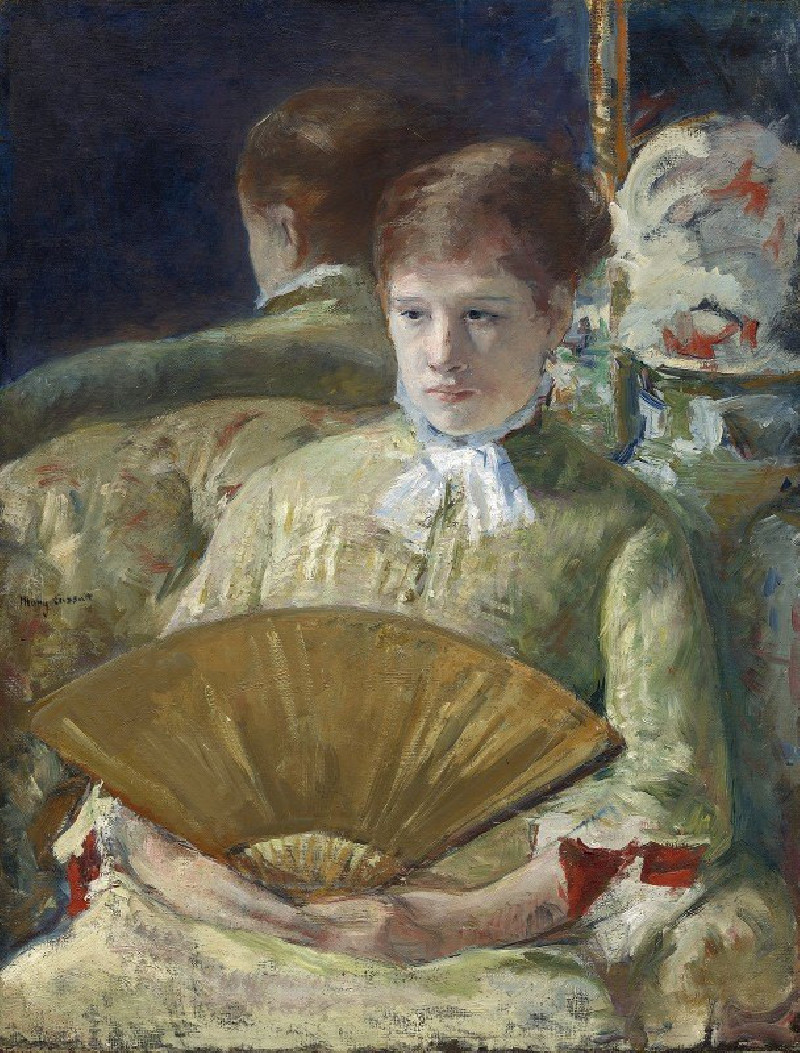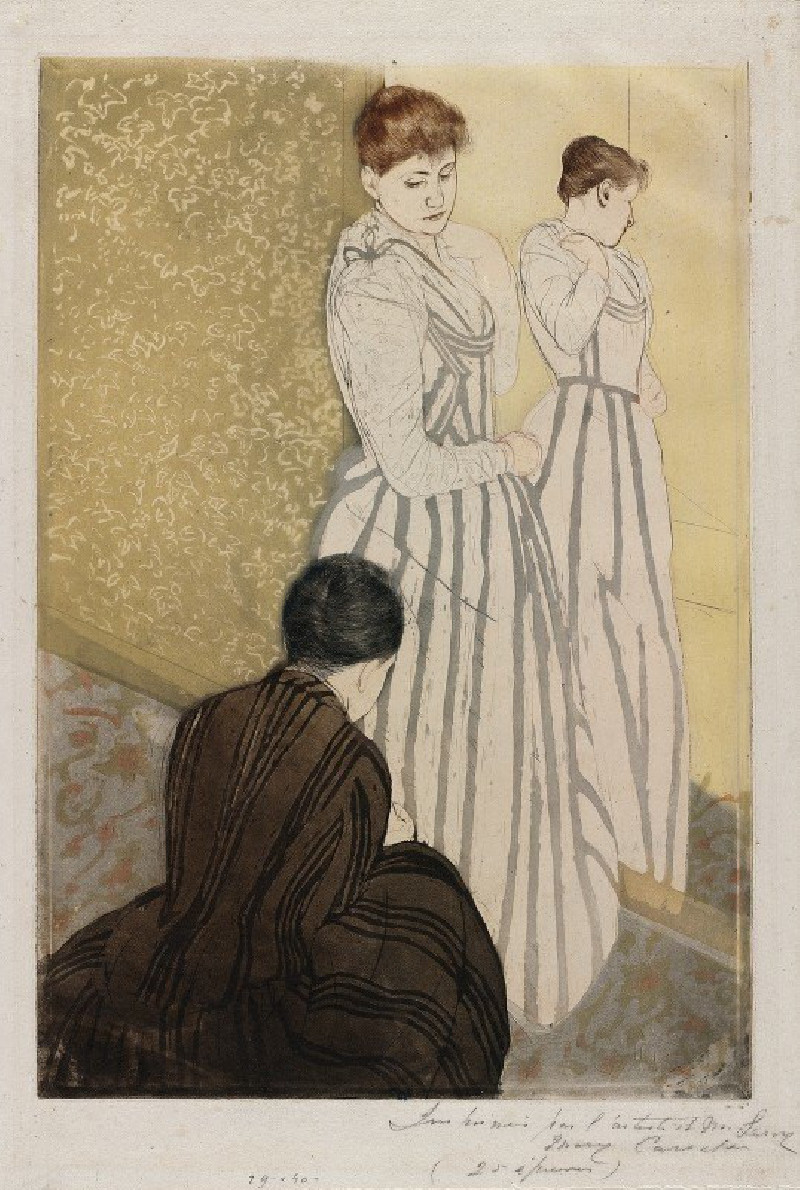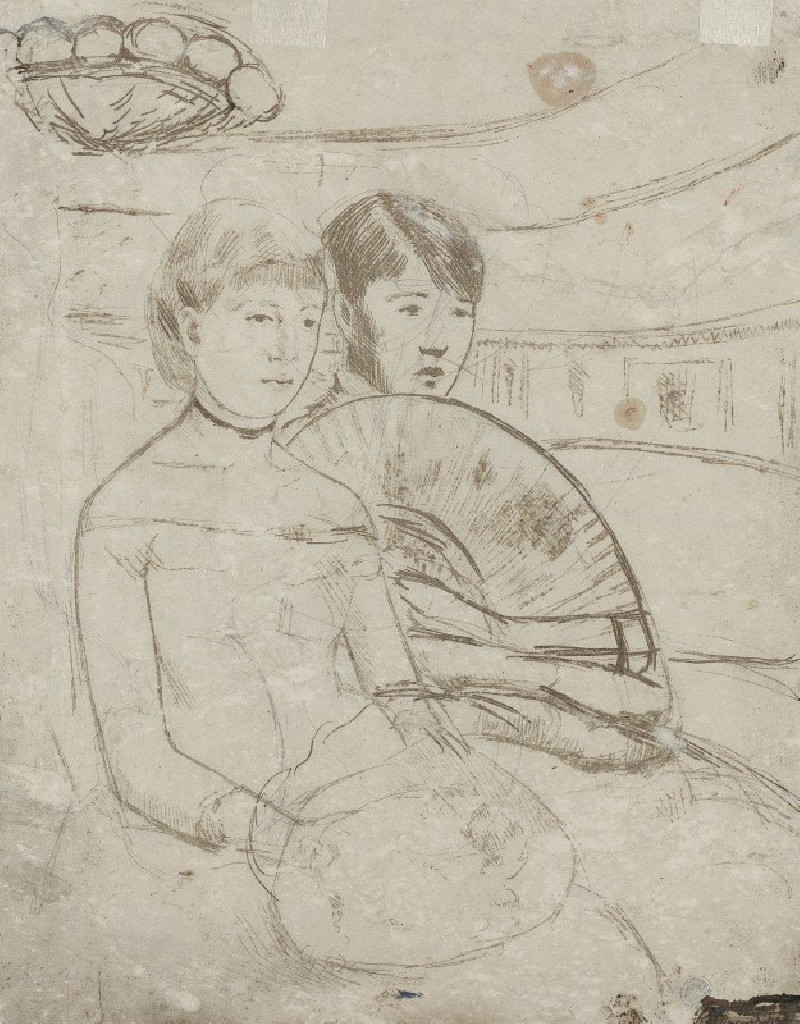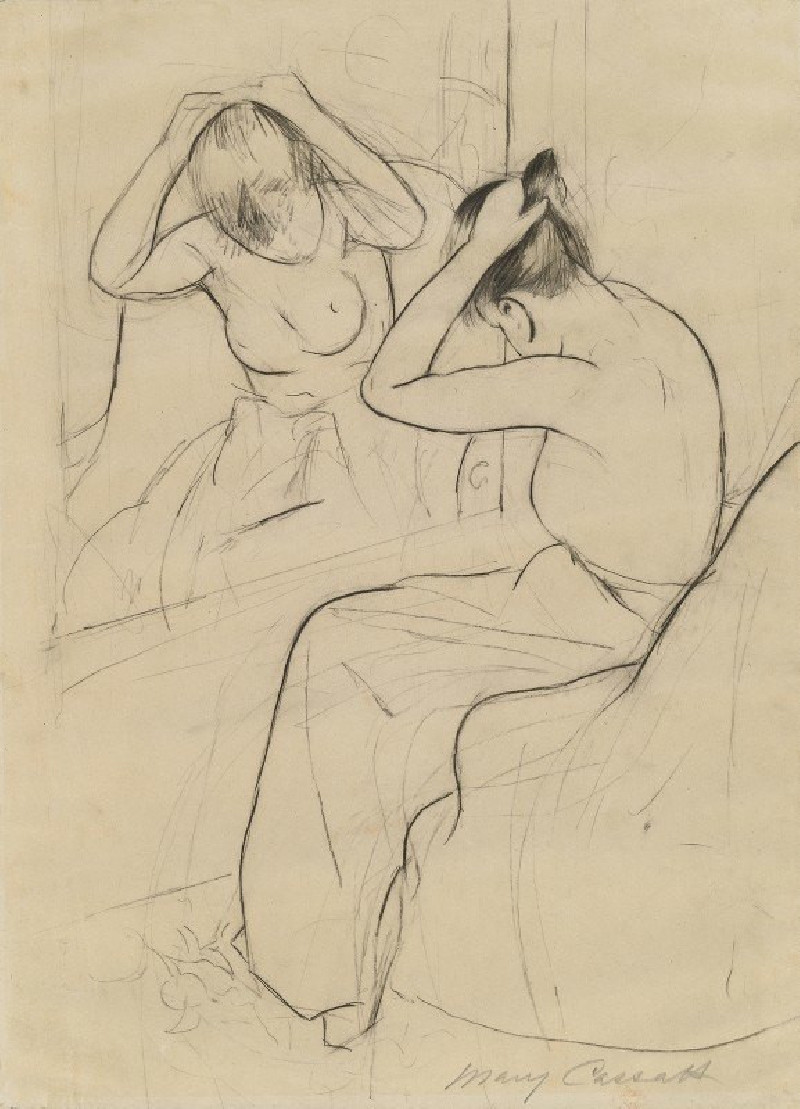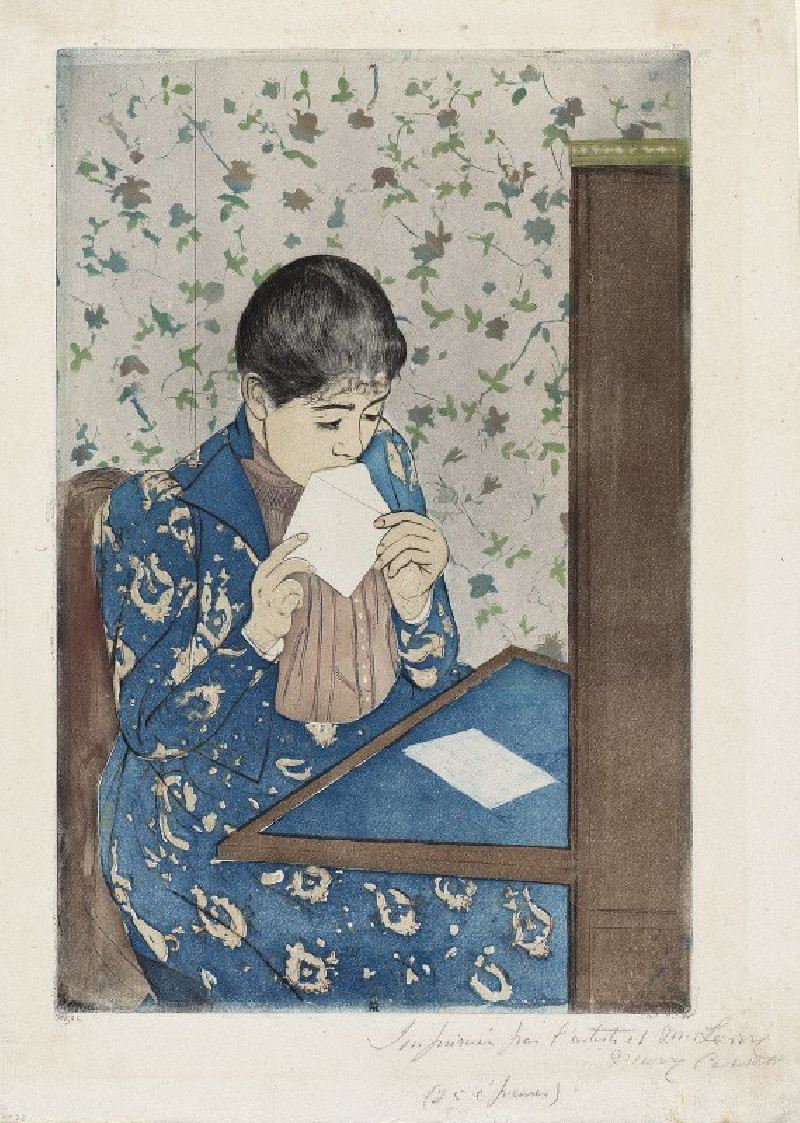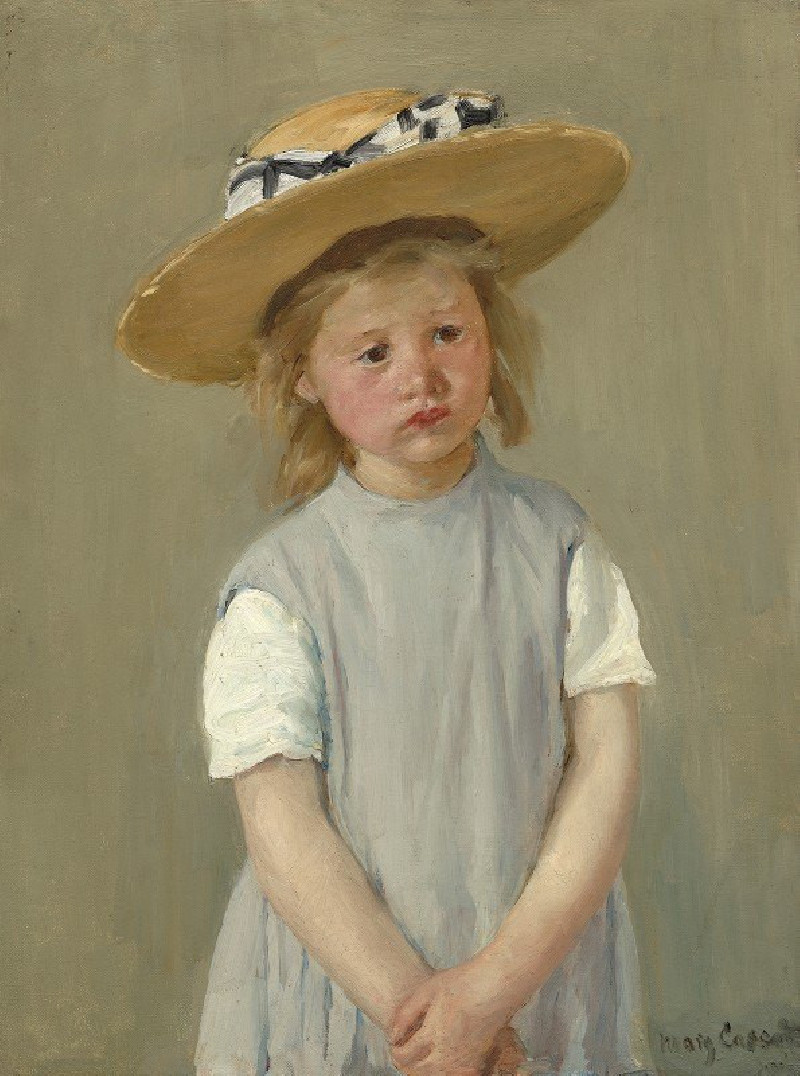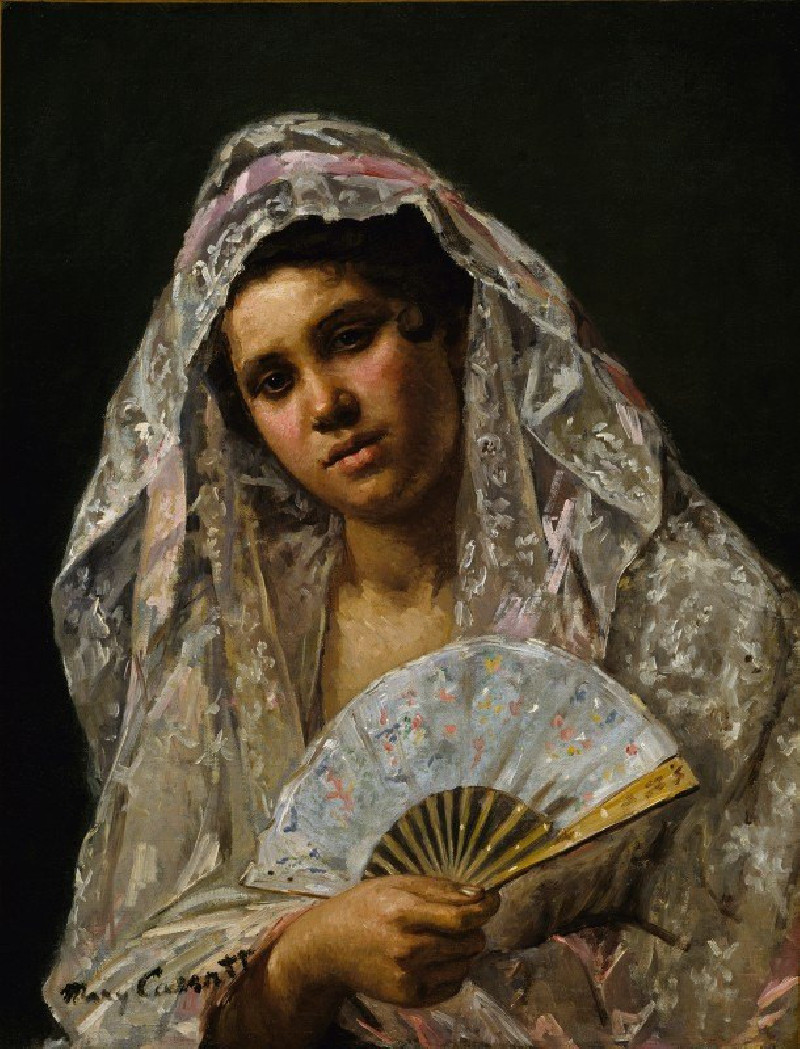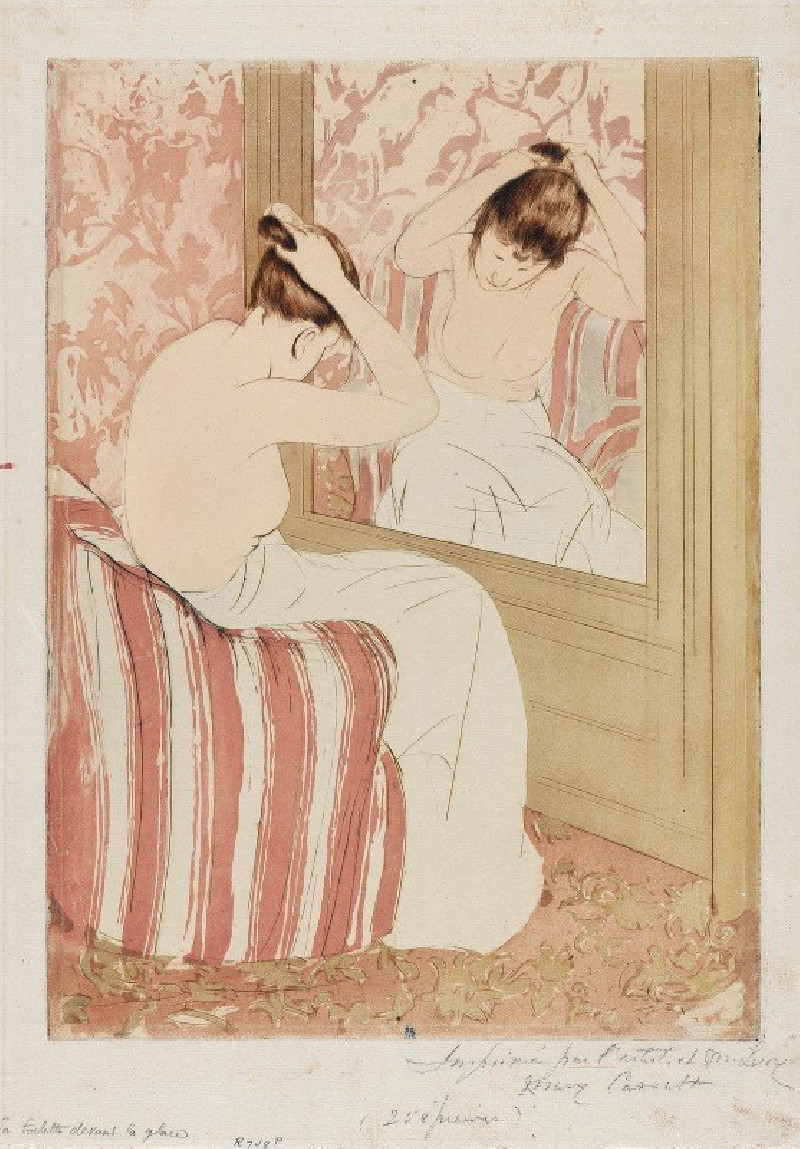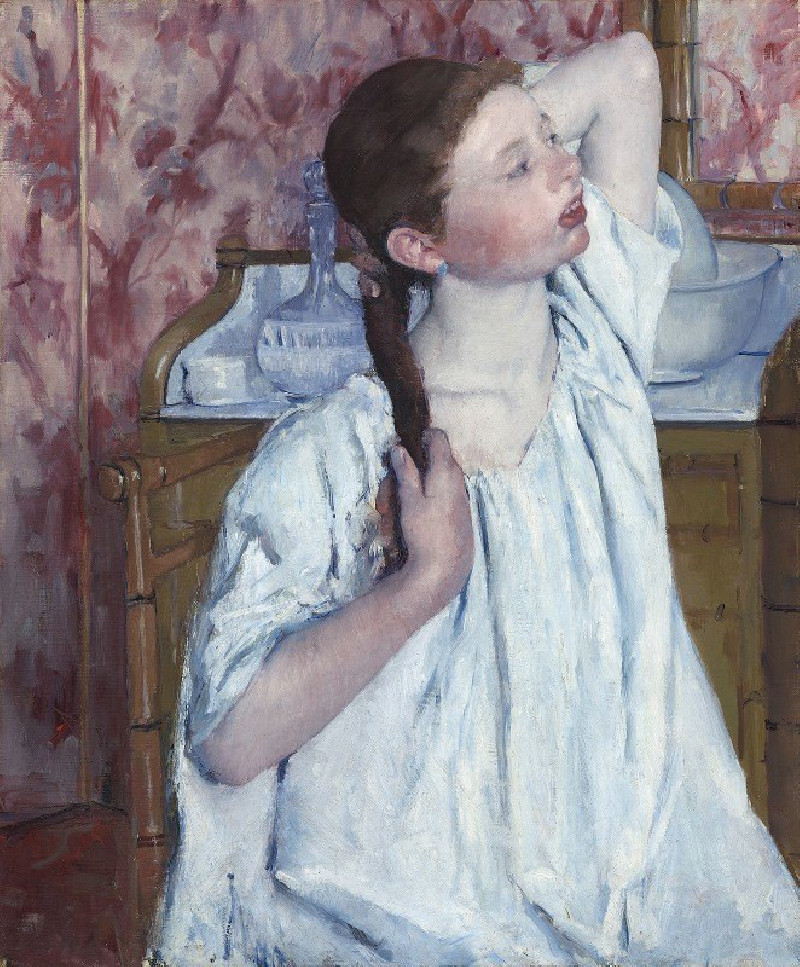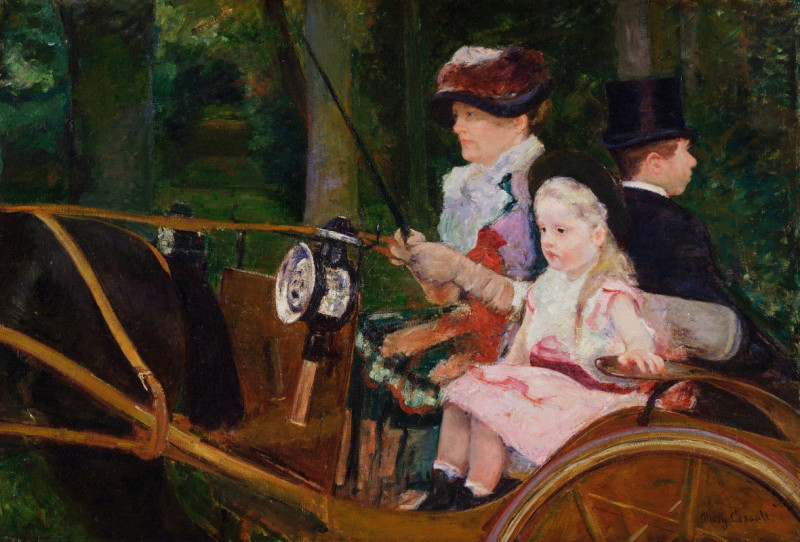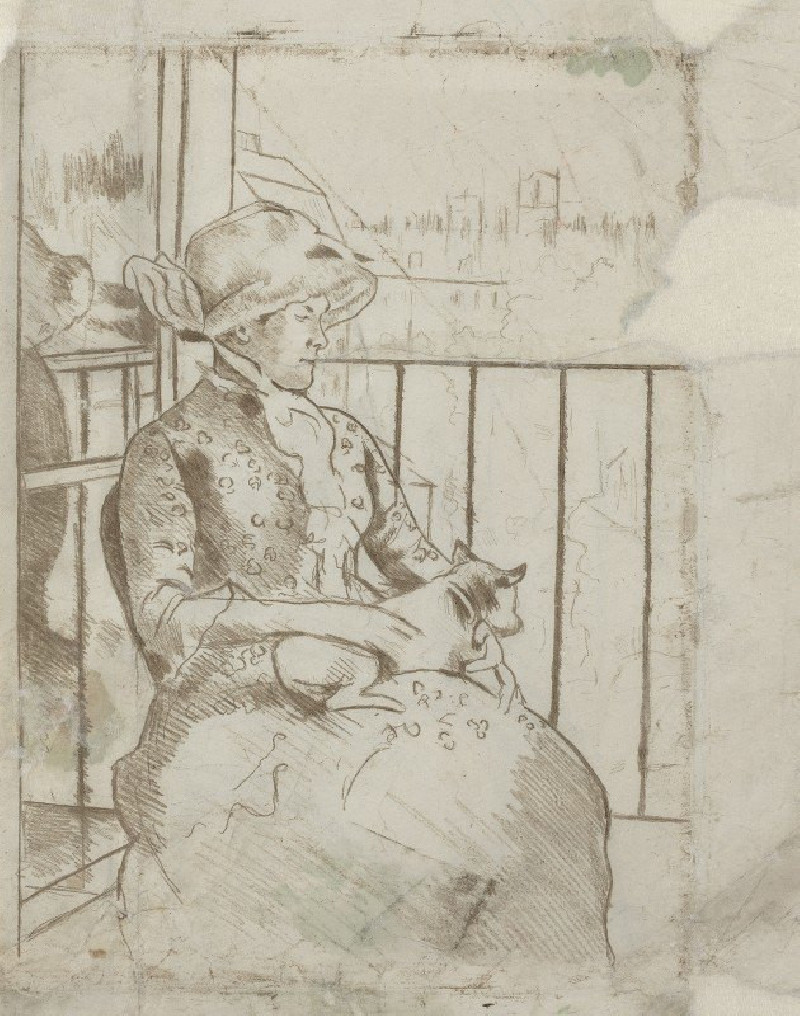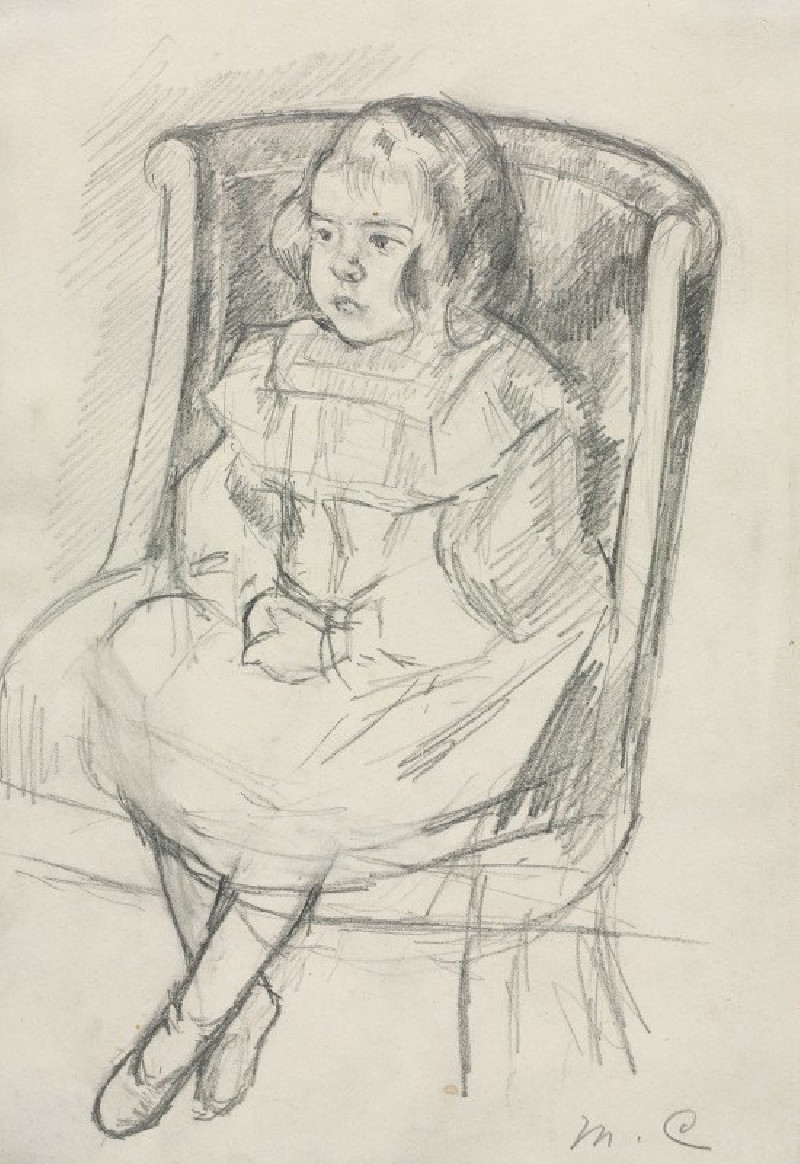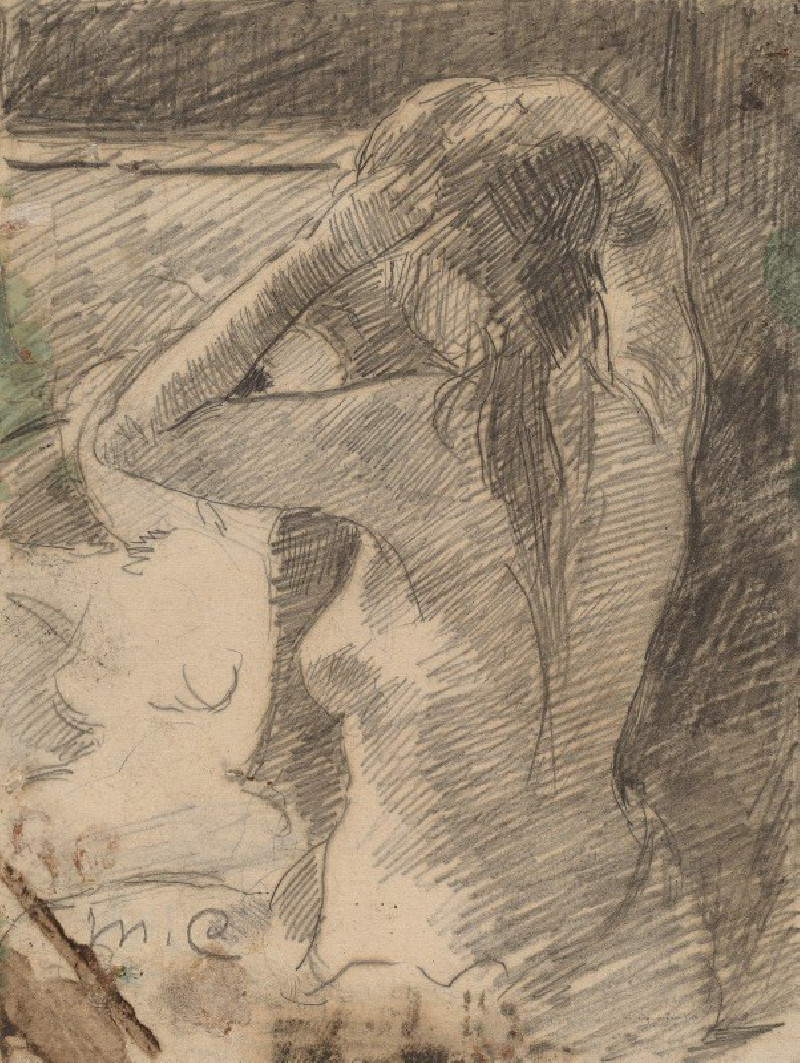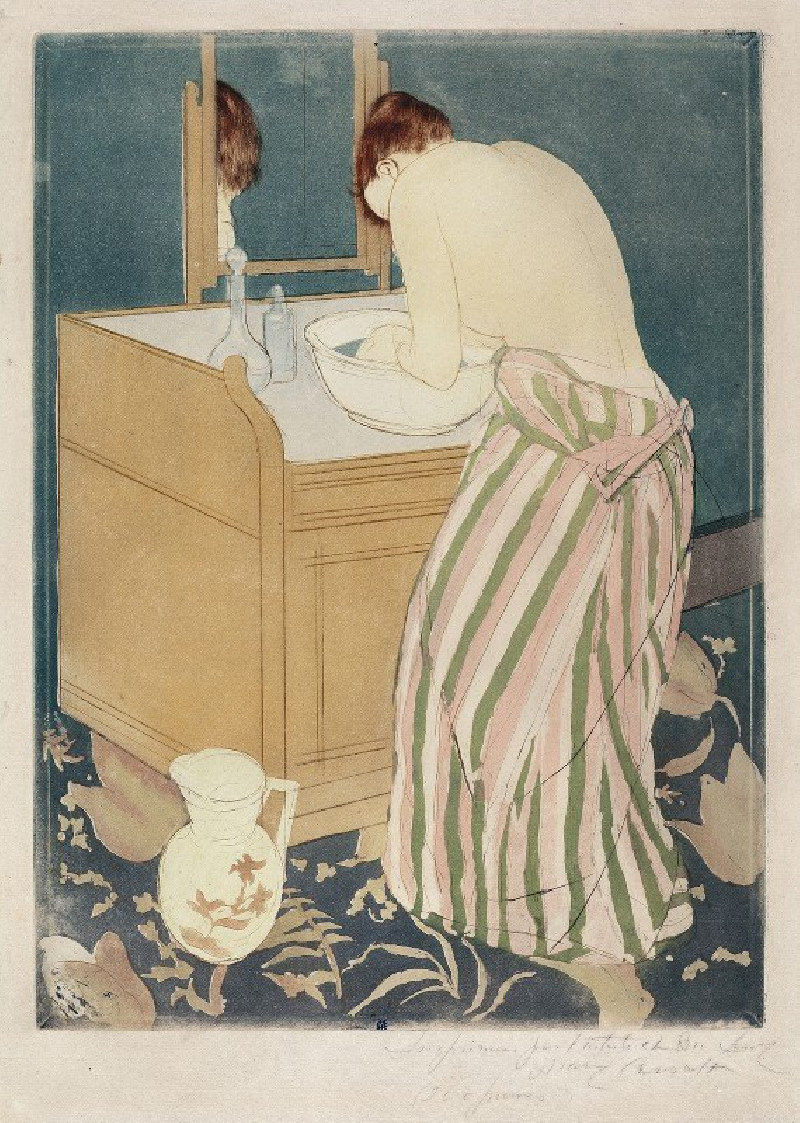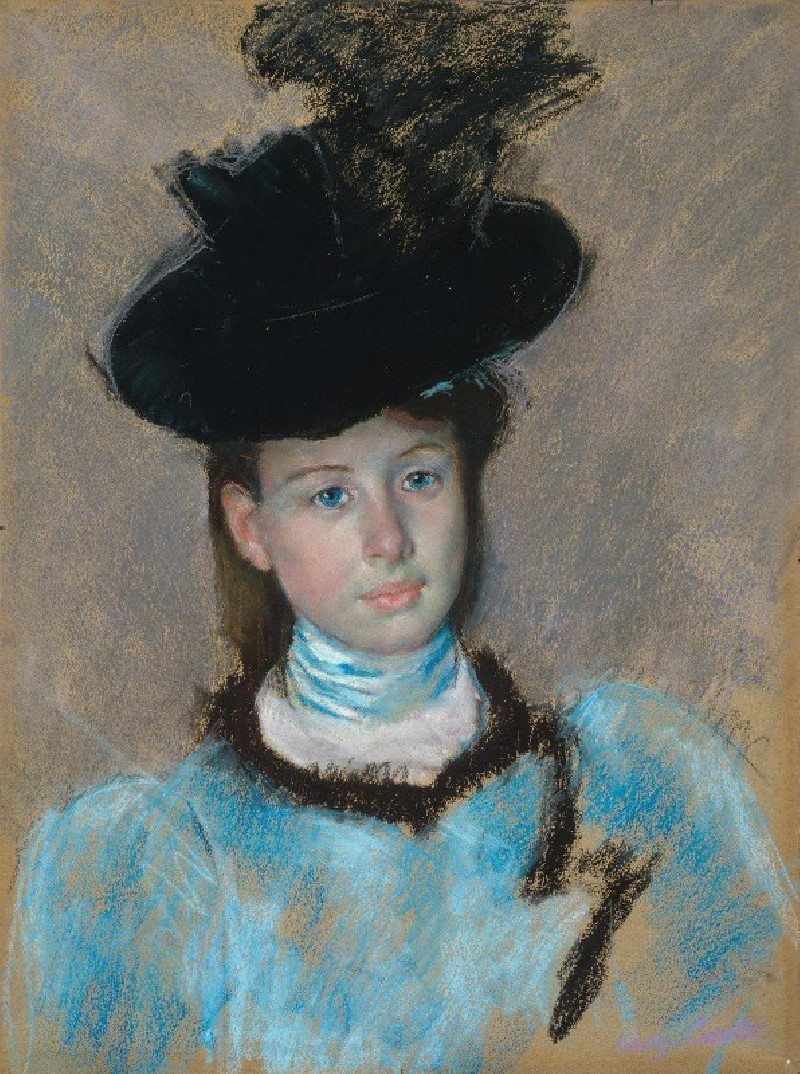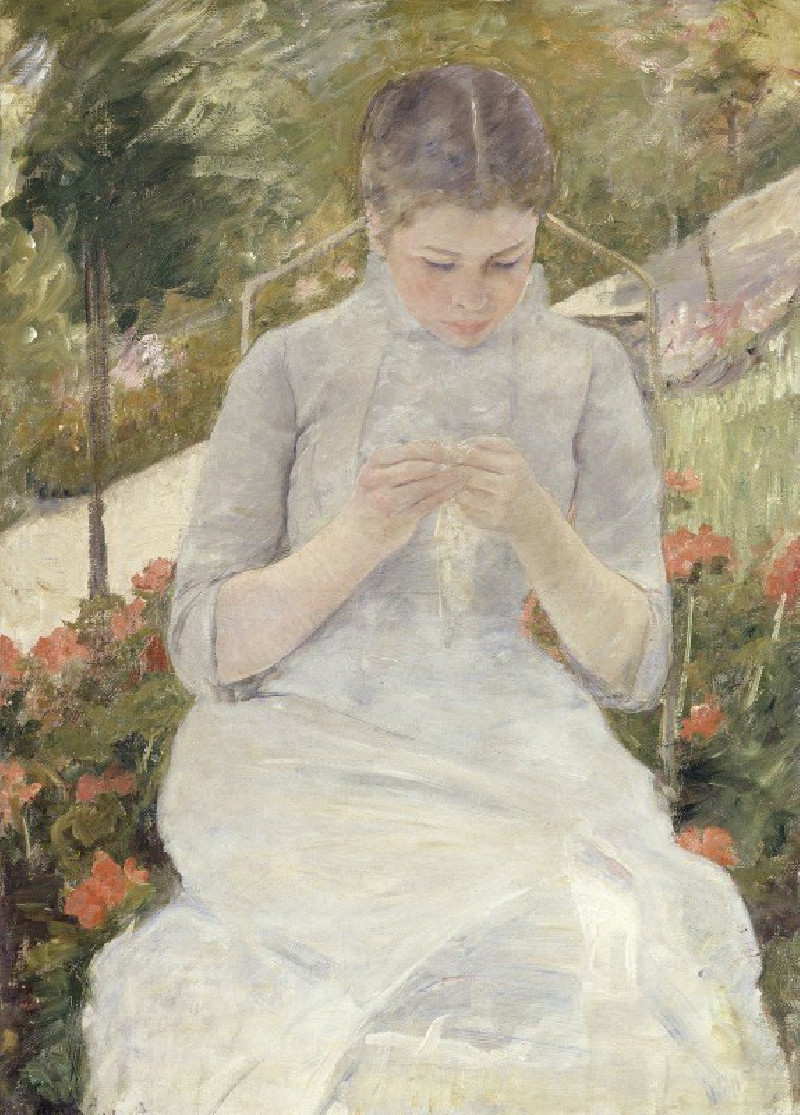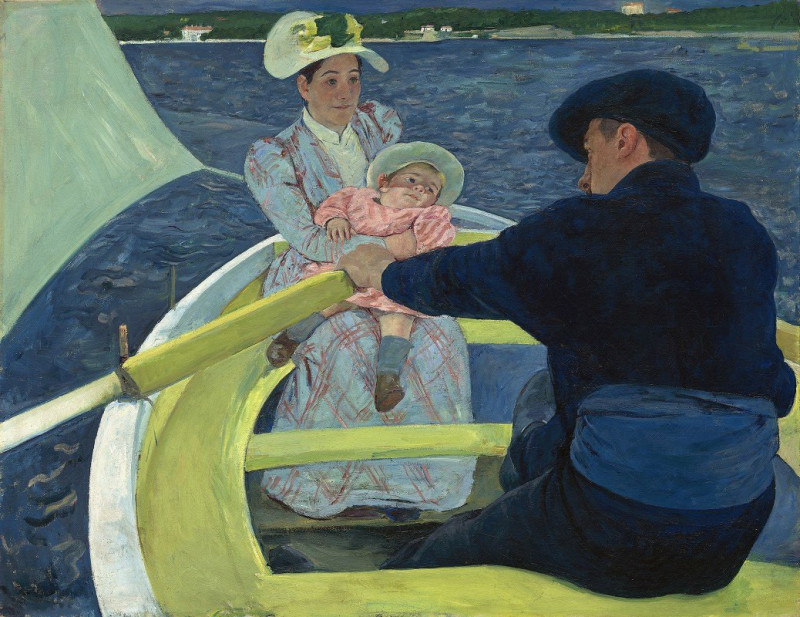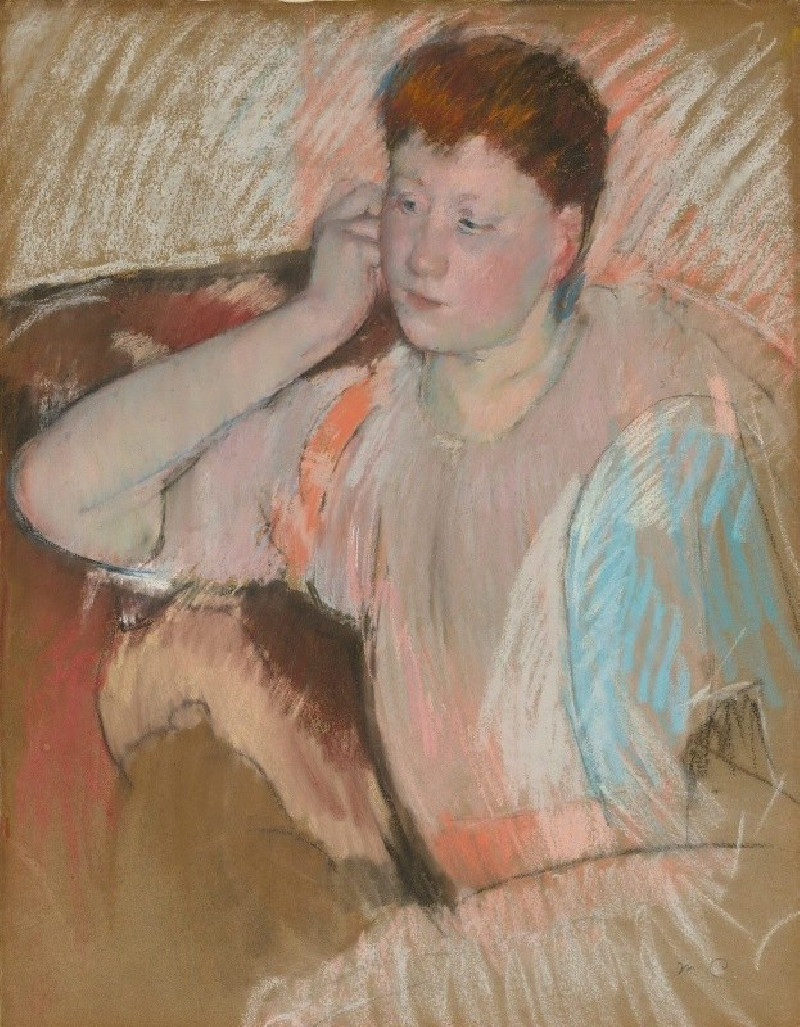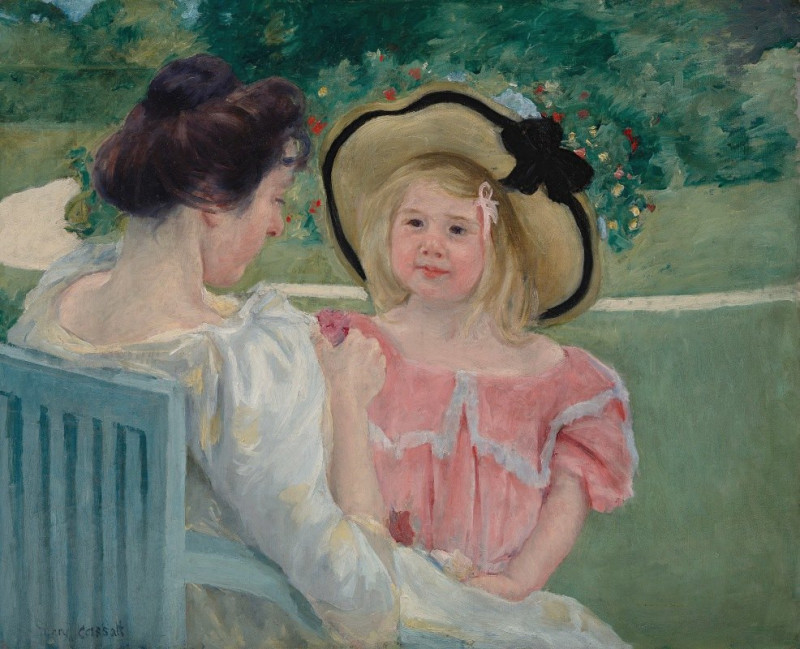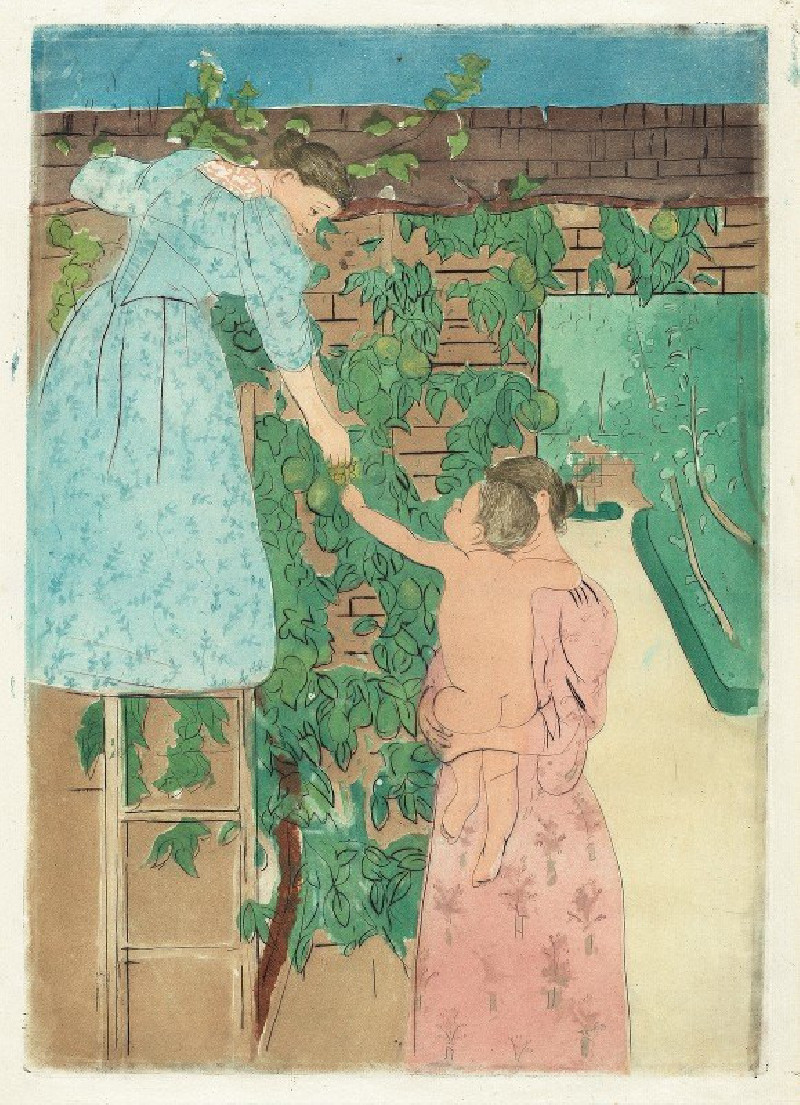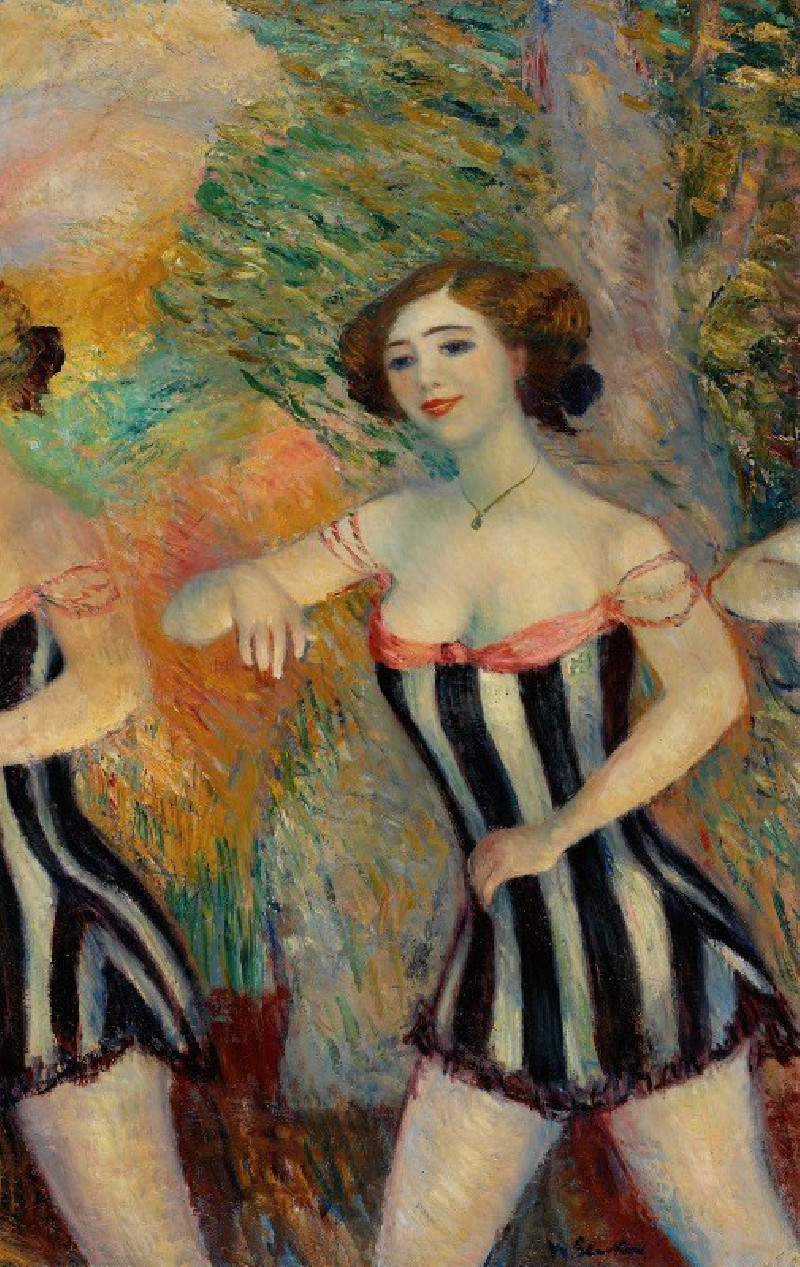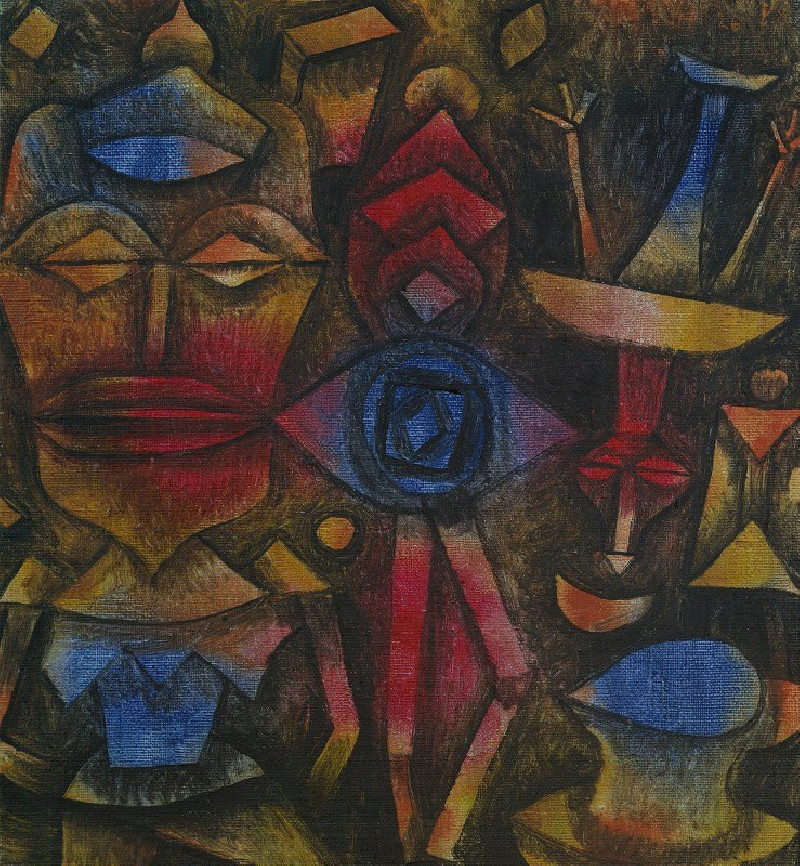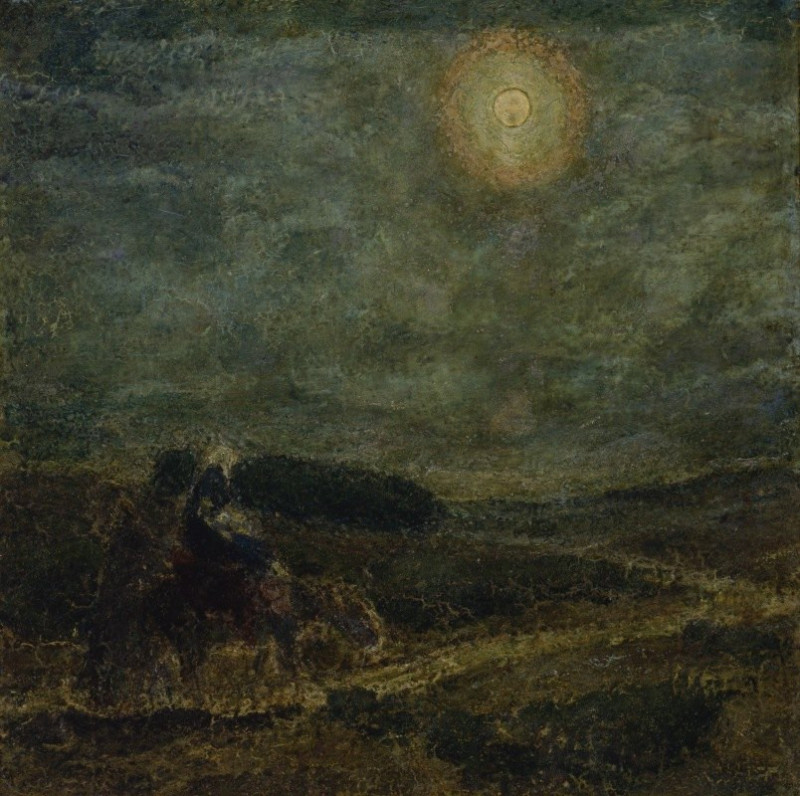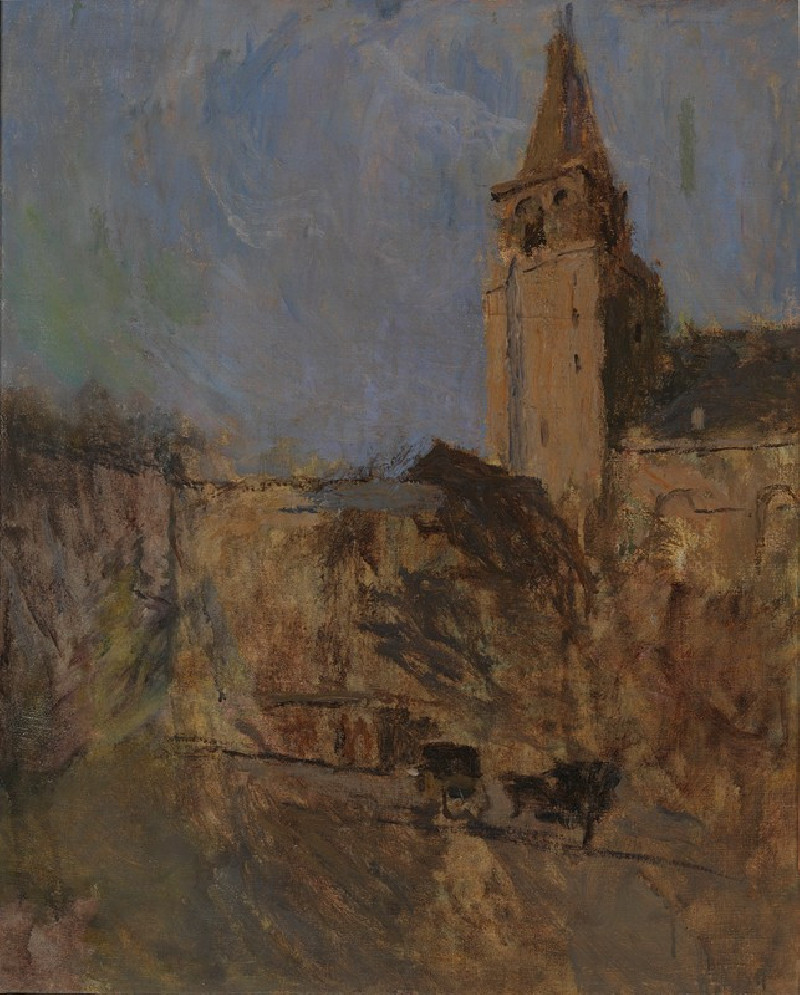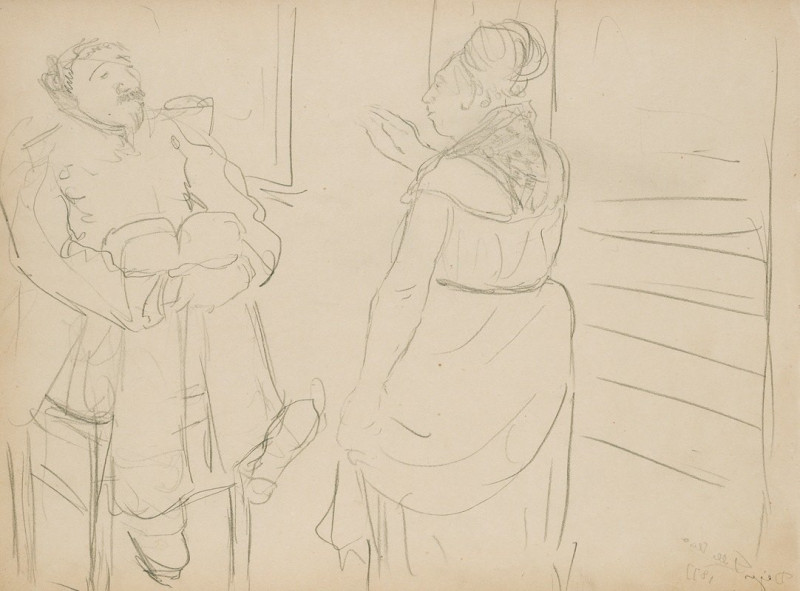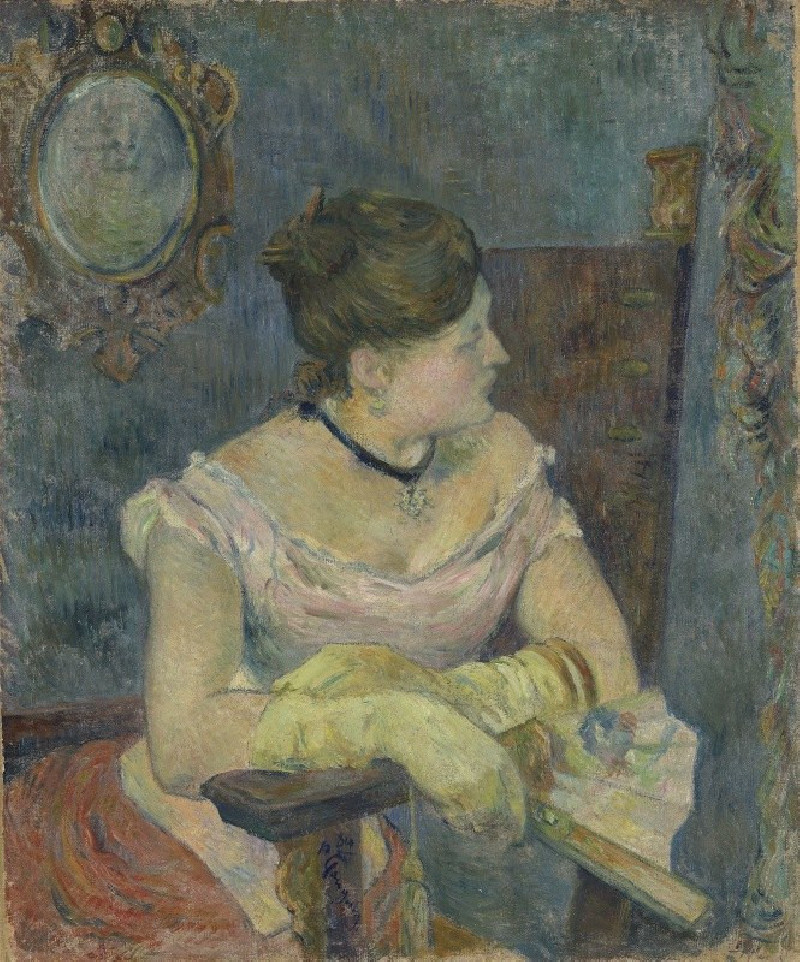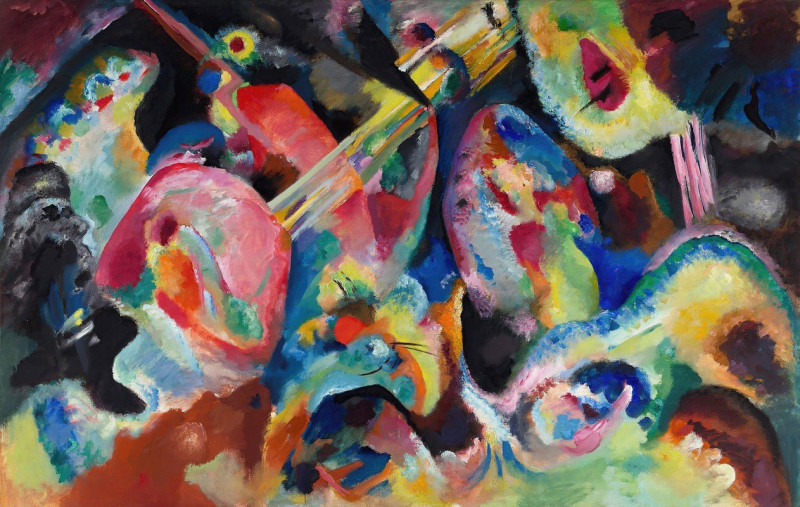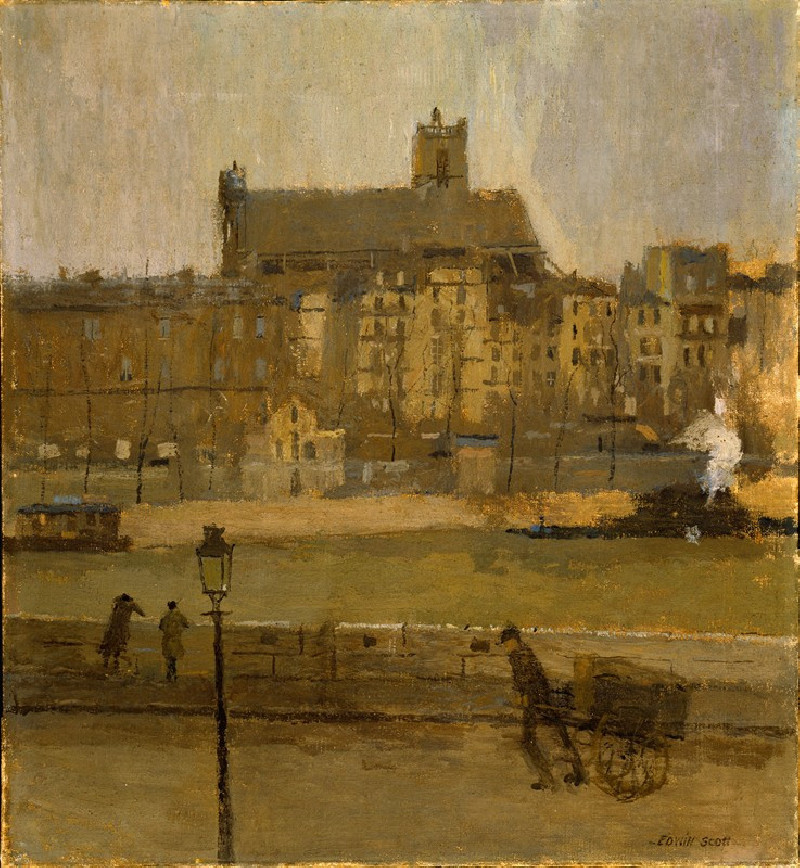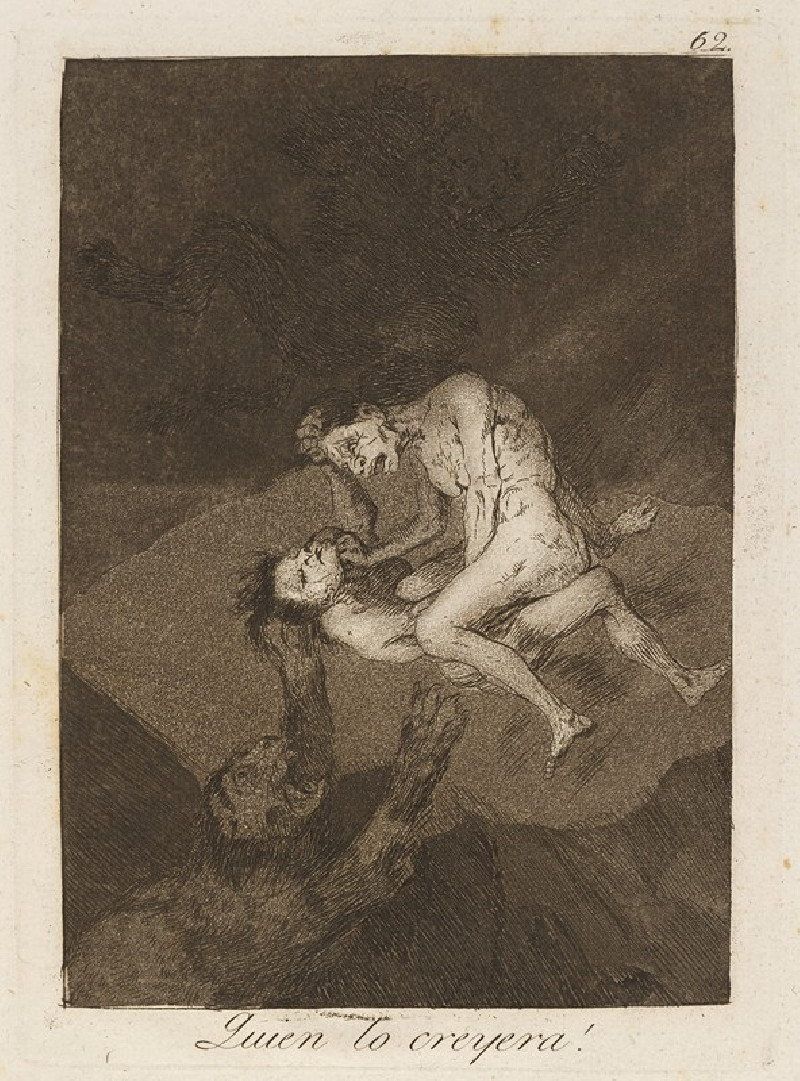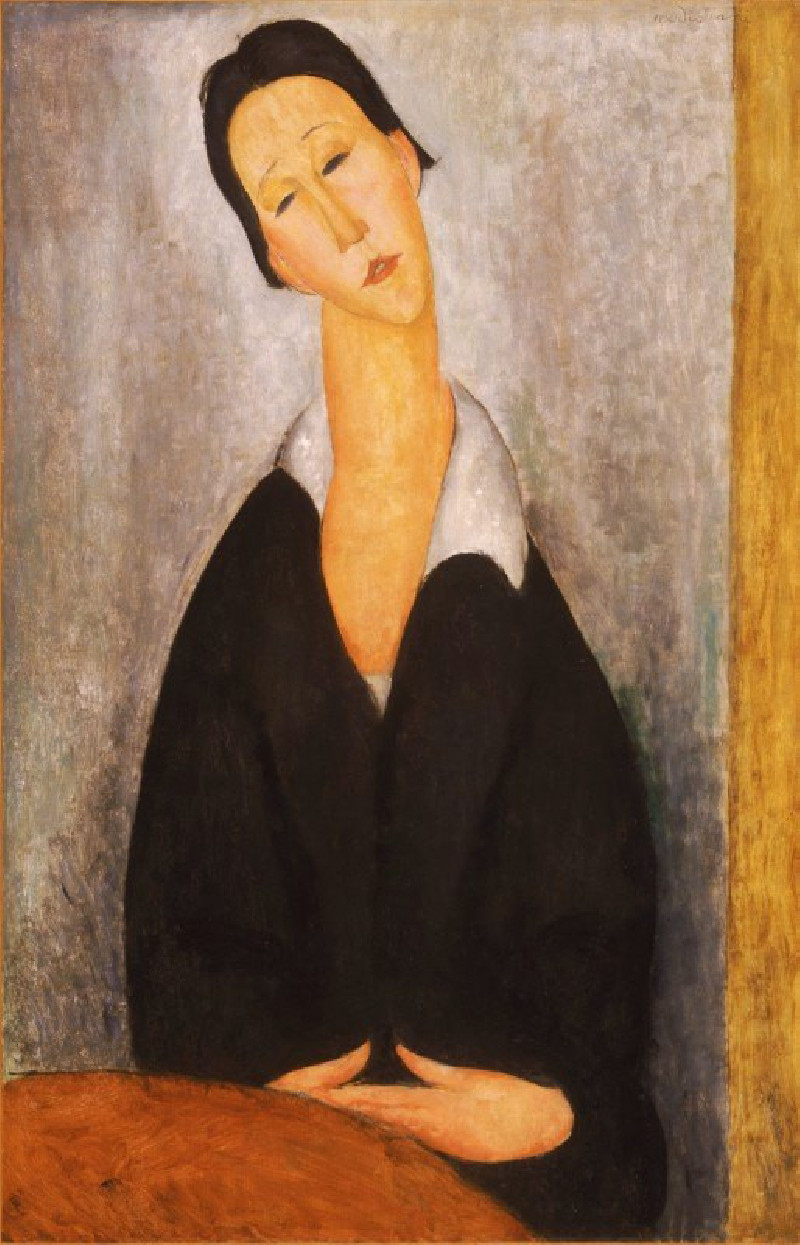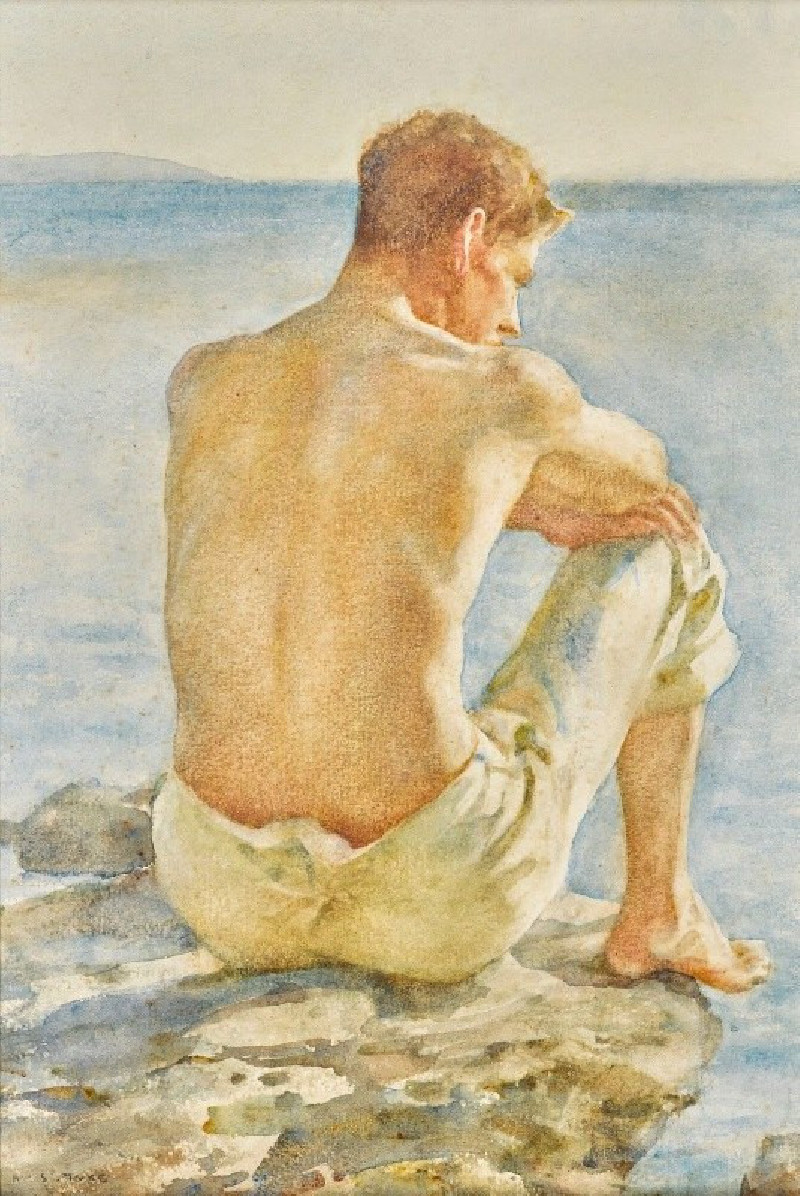Woman Bathing
Technique: Giclée quality print
Recommended by our customers
More about this artwork
This painting, "Woman Bathing" by Mary Cassatt, captures a quiet, intimate moment of personal care. The artwork features a woman bending over a basin, presumably washing her face or performing some other toiletry ritual. She is depicted in a subtle, painterly manner that emphasizes private, everyday activities, which is typical of Cassatt's work.The woman wears a striped robe or towel, which hangs loosely around her waist, partly revealing her back and creating a contrast of texture and color with the robe's detailed stripe pattern. The setting is simplified but carefully composed, with a wooden cabinet on which the basin rests, several bottles (possibly of toiletries or perfumes), and a mirror reflecting the back of the woman's head, deepening the sense of personal space.The background is rendered in a muted blue, which accentuates the warmth of the woman's skin tone and the stripes of the robe. A decorative carpet underfoot adds a delicate floral touch to the scene, echoing the soft, feminine theme that is often prevalent in Cassatt's work.Overall, this painting is a study in the beauty and dignity of ordinary life, reflecting Cassatt's focus on the lives of women and the private, often unnoticed, moments that they hold. The soft color palette, combined with the gentle representation of the subject, evokes a serene, almost contemplative atmosphere.
Delivery
Returns
Mary Stevenson Cassatt was an American painter and printmaker. She was born in Allegheny City, Pennsylvania (now part of Pittsburgh’s North Side), but lived much of her adult life in France where she befriended Edgar Degas and exhibited with the Impressionists. Cassatt often created images of the social and private lives of women, with particular emphasis on the intimate bonds between mothers and children.
She was described by Gustave Geffroy as one of "les trois grandes dames" (the three great ladies) of Impressionism alongside Marie Bracquemond and Berthe Morisot.In 1879, Diego Martelli compared her to Degas, as they both sought to depict movement, light, and design in the most modern sense.


